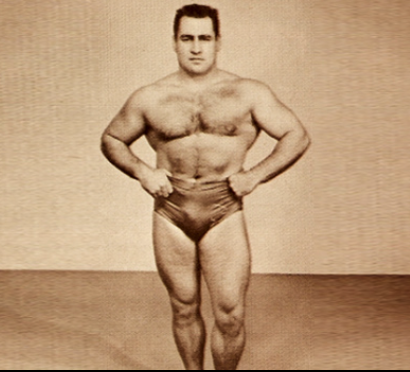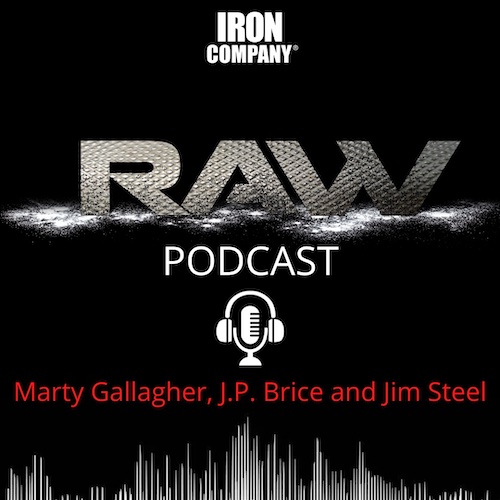
The Almighty 5 Rep Set
The “perfect balance” and the “default” rep range of champions
I had one of the younger athletes I work with ask why our school of strength training favored the five rep set so much. The lion’s share of our resistance training time is devoted to improving our 5-rep performance in each of the “core four,” the barbell back squat, bench press, deadlift and overhead press. Sometimes things are done so regularly, routinely and so often that we forget the original motivation and rationale.
Why had the five-rep set become the favored number of reps for our top sets in the core four? I revved up the memory banks: I was first introduced to the idea that the five-rep set was superior and should be emphasized over other rep possibilities by John McCallum. “Mac” McCallum wrote a highly influential monthly column in Strength & Health magazine called Keys to Progress. The column ran every month for five years and stressed the ultra-basics.
Keys to Progress articles were strength and power parables. Mac would set the premise in the title and use a repeating cast of characters to illustrate how to attain the attribute sought after. He did so in humorous and insightful ways. As a writer, he was gonzo before Hunter Thompson published his first article. To wit…
I once watched Reg Park train his legs. He was doing barbell squats with half the weight plates in the gym draped across his shoulders. The gym owner was biting his nails, afraid the wooden floor might collapse beneath Park as he did rep after rep, each one looking like it had to be the last, he was past his limit, yet he kept on going and going...I had never seen anyone work so hard in my life. And not coincidentally, I had never in my life seen anyone with legs like Reg.
For some reason never clearly stated, Mac loved the five-rep set. He recommended them on all the “big” progressive resistance exercises (compound movements) like squats, front squats, power cleans, overhead press, power snatches, bench presses, deadlifts and rows. For curls, lateral raises, ab work, flyes and calves, the “smaller” (isolation) exercises, Mac advised higher reps and assigned them secondary status.
For Mac, the idea was to get inhumanely strong in the core four, specializing in 5-rep sets. Low 1-3 rep sets have always been associated with maximum power and strength while higher rep sets, 8-12 reps, have always been associated with maximizing muscle size. The 5-rep set, it was reasoned, struck the balance between the pure power of low reps and the muscle-building attributes of high reps. It was (rightly) reasoned that the 5 could provide both low rep torque and high rep horsepower.
Mastery of the 5 became the protocol of power: the meat and potatoes of progressive resistance training, everything else was just gravy and garnish and desert. Mac was so compelling and persuasive that I followed his advice and concentrated on the barbell basics using pristine techniques and always seeking to get better at 5-rep sets. Because of Mac, we did 5s. The advice I was given half a century ago has stood the test of time - how lucky was I?
I got further positive feedback about 5s when I began apprenticing under world powerlifting champion Hugh “Huge” Cassidy. Hugh introduced me to periodization and the guts of all Cassidy’s Periodized schedules was devoted to getting maximally good at 5-rep sets in the squat, bench press and deadlift. It was déjà vu all over.
Hugh liked to work up to a big double or triple in one of the three lifts, then cut back the poundage and perform 2-3 “back-off sets” of the same exercise. He called the back-off sets the “hallmark” of his approach. His 5-rep preference was carried over into the “big” assistance exercises: overhead pressing, rows, stiff-legged deadlifts and deadlifts off a barbell plate or box. Hugh also had us do maximum 5-rep sets in a gruesome exercise of his own invention he called “heaves.”
The hybrid heave exercise was what might be best described as an explosive deadlift with a shrug at the apex. At the time I was deadlifting around 650 in the 198-pound class, so he had me do three 5-rep sets, first with 405 then 495 and finally 550 pounds. This was done after having worked through squats and back-off squat sets, deadlifts and deadlift back-off sets. Then heaves, it was murderous work. We ate like liberated prison camp inmates just to survive.
In the 1980s more 5-rep credence came my way when I became aware that 5s were the backbone of Iron God Ed Coan’s training template. Ed had trained with power pioneer Ernie Frantz and Ernie was a lover of the 5. Power immortal Doug Furnas told me at length and repeatedly about how he used the 5-rep set to near exclusion. He told me he never did more than 5-reps in the squat and his 5-rep preference carried over into bench press. The five-rep default rep range had been passed along to Furnas by his mentor, world champion Dennis Wright.
The world’s greatest lifters independently came to the same conclusion: the 5 was the King of reps. Men from far-flung and varied regions, all touted the five, all swore allegiance to the 5-rep set. The popularity was (and is) attributable to the results. When a man makes a truly concerted and serious effort, concentrating on fives, using pristine technique, eating right, relentlessly pushing up poundage, results are always forthcoming.
Try concentrating on 5-rep sets in the core four and all their respective variations. Establish 5-rep personal records in all the lifts and in all their variants. Once you have personal records, seek to exceed these current personal bests. That is where the muscle and strength gains lie. Sync up a regular regimen of 5-rep sets with some organic power eating for maximum muscle gains in a minimal timeframe. Learn to love the 5.
About the Author
As an athlete Marty Gallagher is a national and world champion in Olympic lifting and powerlifting. He was a world champion team coach in 1991 and coached Black's Gym to five national team titles. He's also coached some of the strongest men on the planet including Kirk Karwoski when he completed his world record 1,003 lb. squat. Today he teaches the US Secret Service and Tier 1 Spec Ops on how to maximize their strength in minimal time. As a writer since 1978 he’s written for Powerlifting USA, Milo, Flex Magazine, Muscle & Fitness, Prime Fitness, Washington Post, Dragon Door and now IRON COMPANY. He’s also the author of numerous books including Purposeful Primitive, Strong Medicine, Ed Coan’s book “Coan, The Man, the Myth, the Method" and numerous others. Read the Marty Gallagher biography here.



